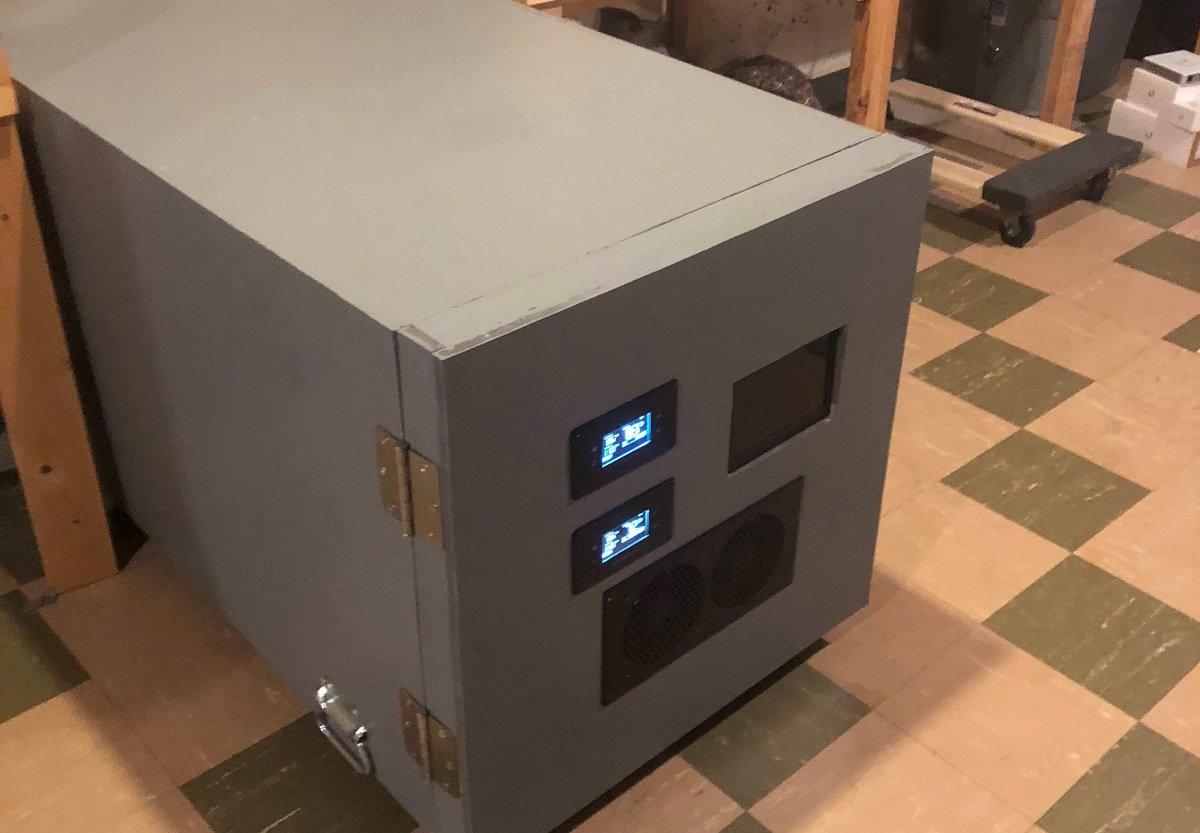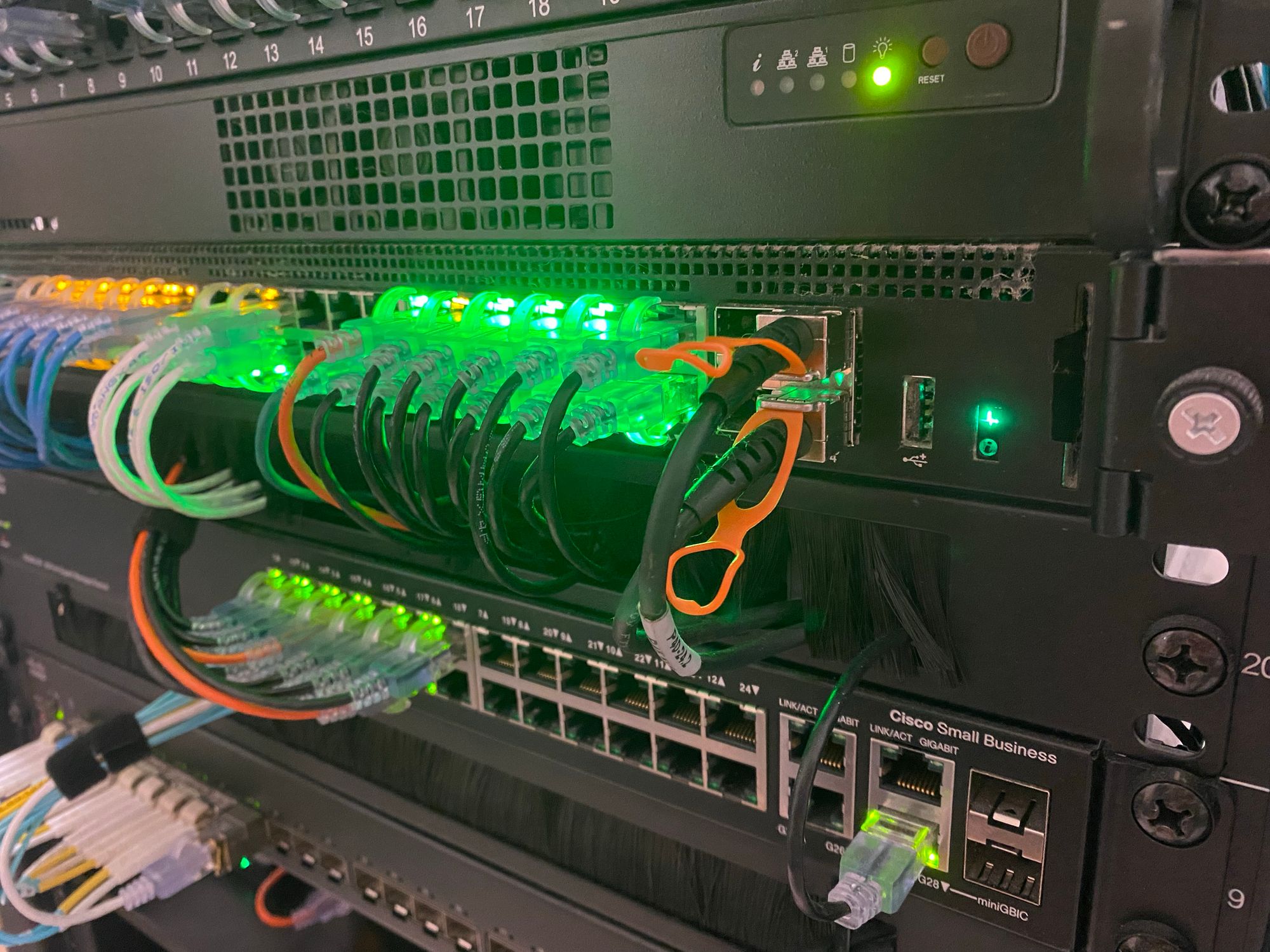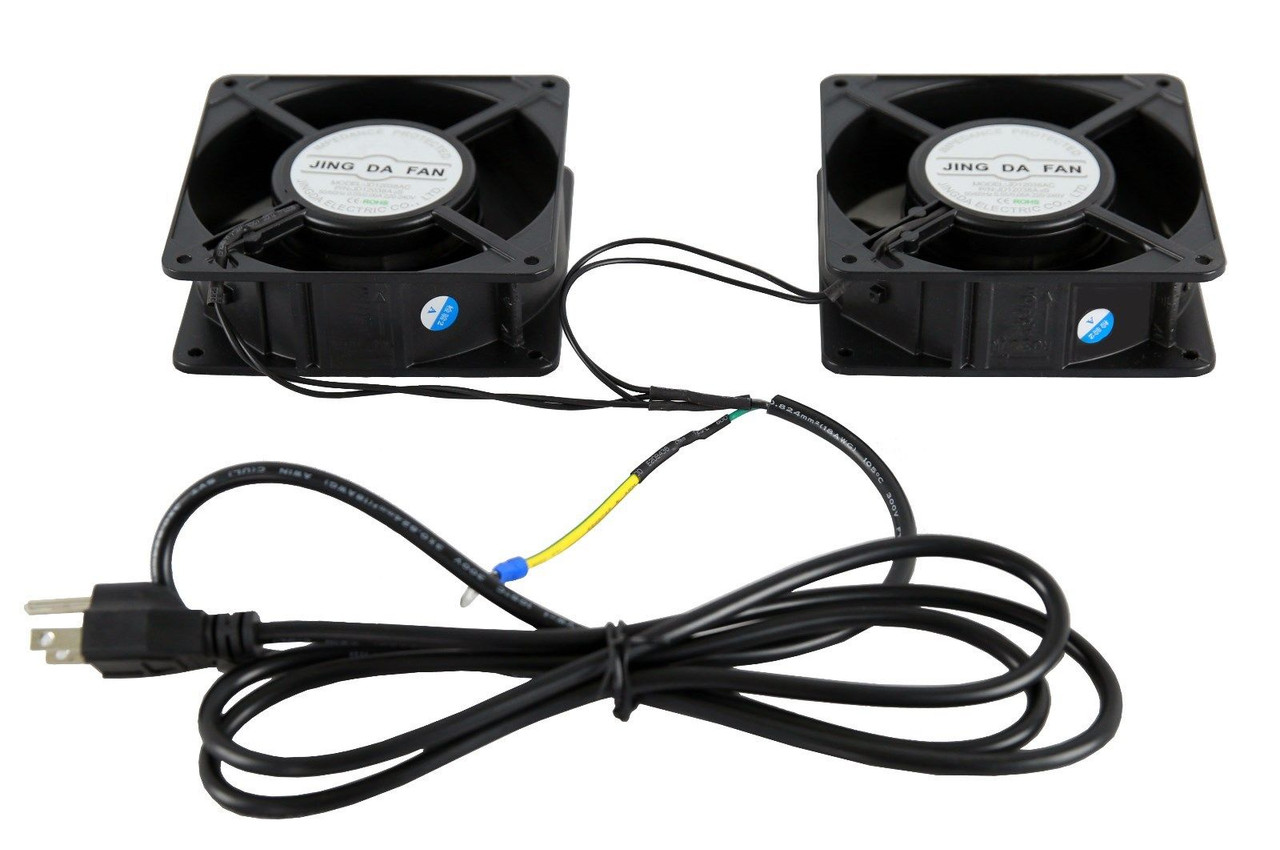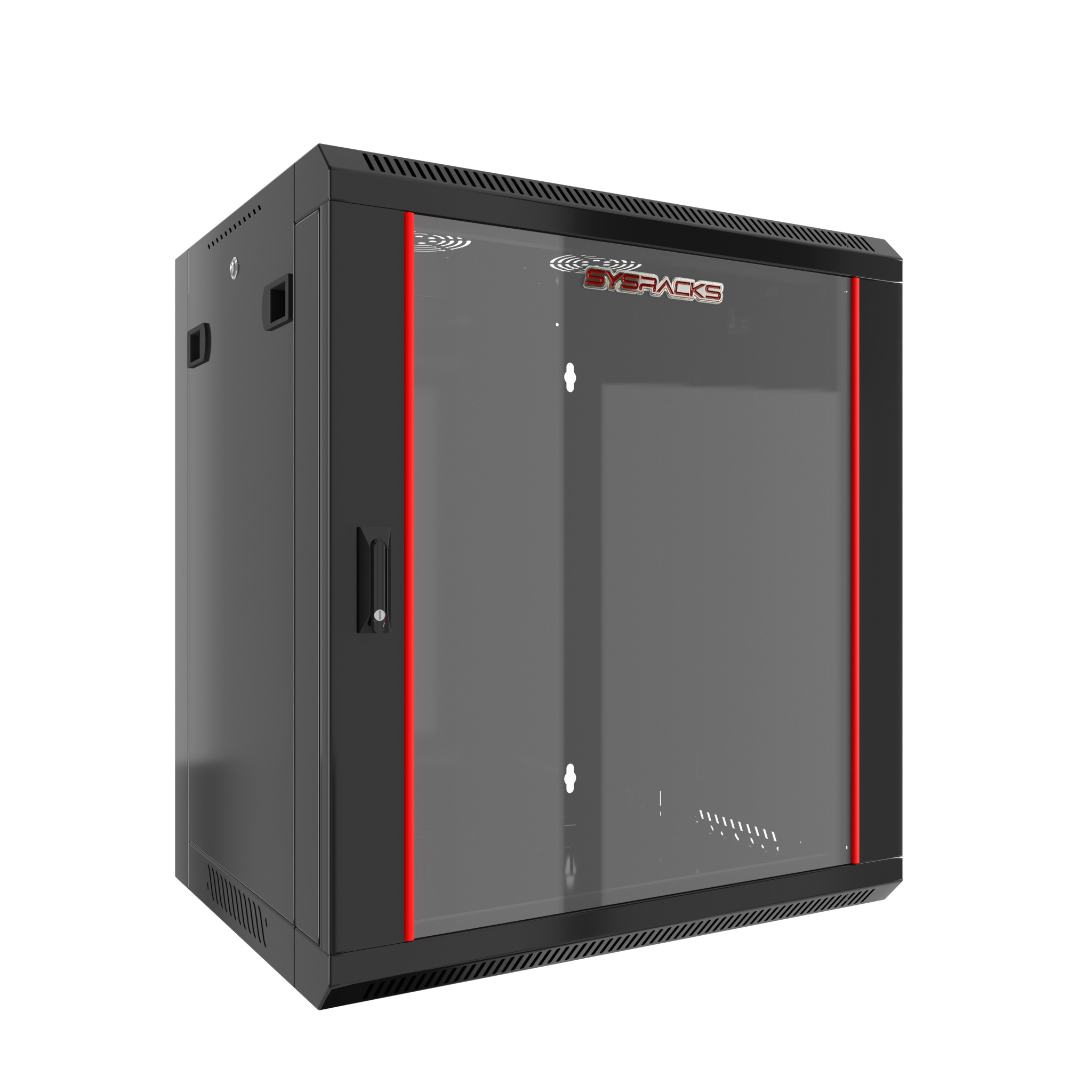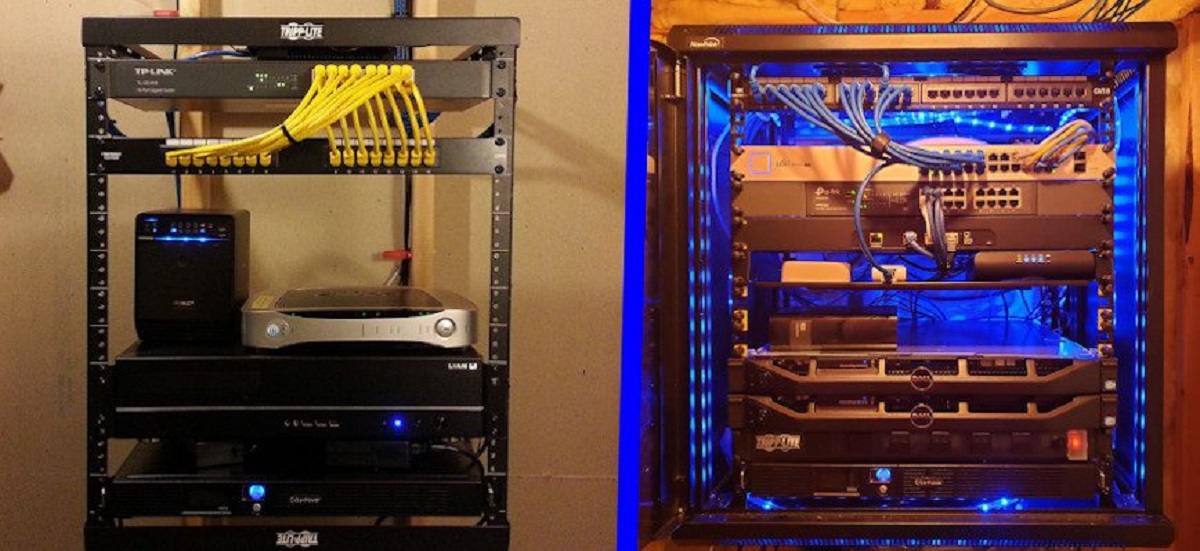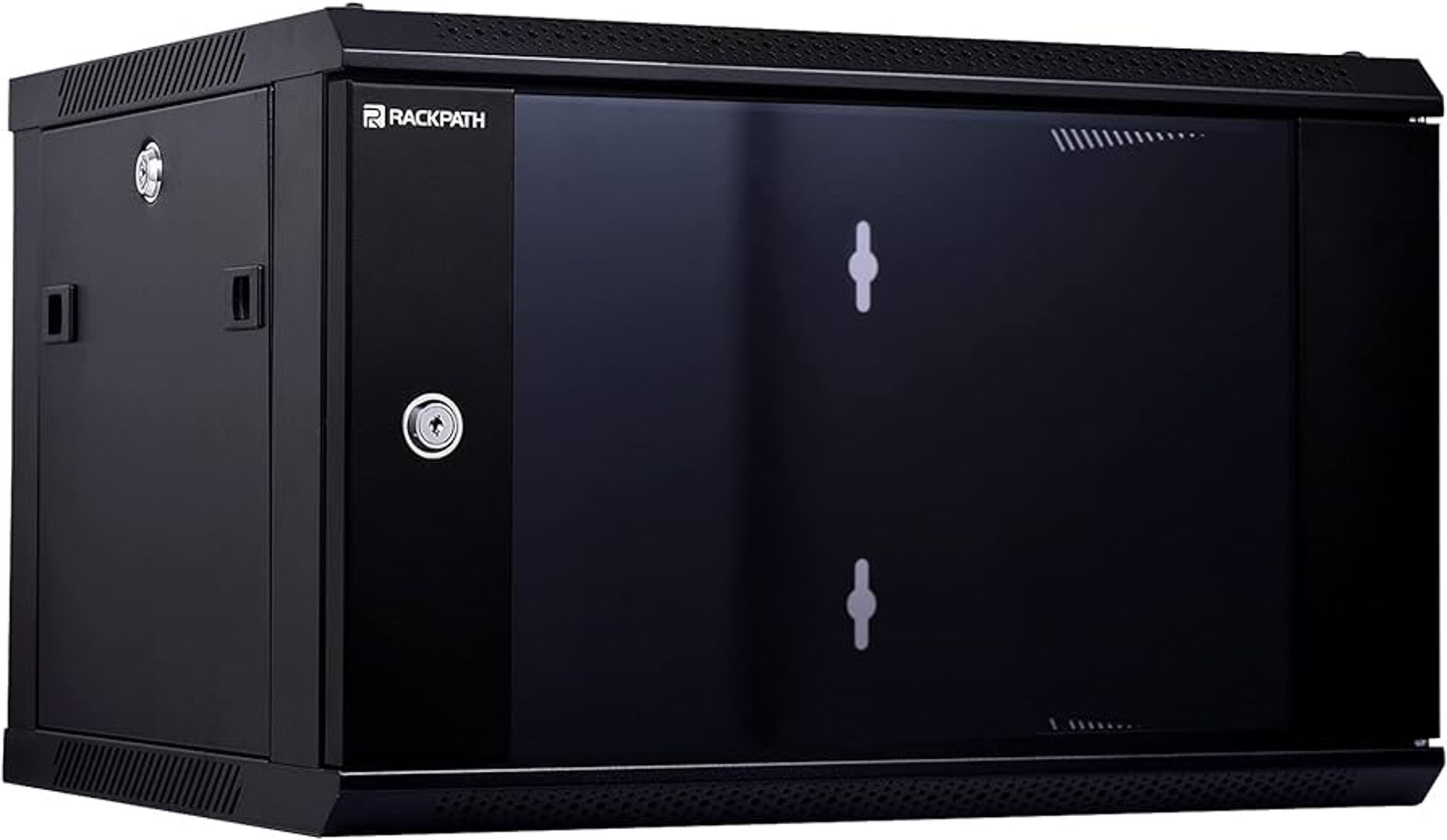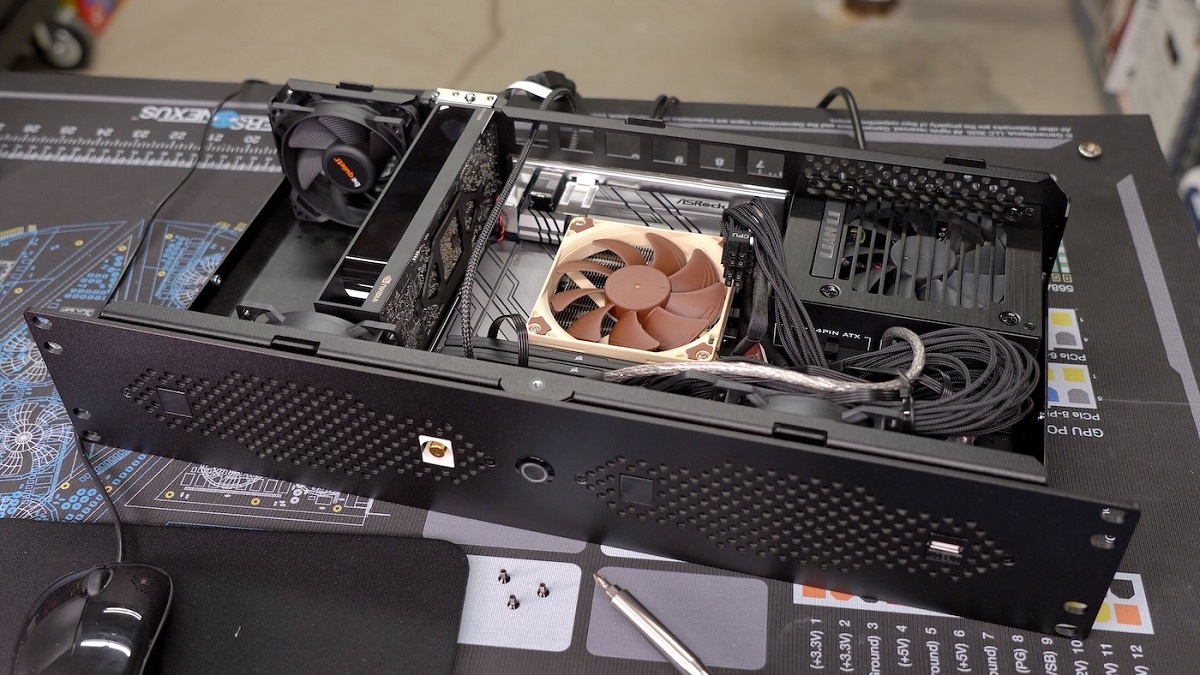Introduction
Server racks are an essential part of any IT infrastructure, allowing businesses to house and organize their servers in a convenient and efficient manner. However, these server racks can also generate a significant amount of noise, which can be not only distracting but also disruptive to the working environment. Whether you’re working in a small office or a large data center, finding ways to quiet a server rack is crucial for maintaining a productive and comfortable workspace.
In this article, we will explore various methods and strategies for reducing the noise generated by a server rack. We will discuss the importance of addressing this issue and the potential impact it can have on both employees and equipment. Additionally, we will examine different soundproofing options that can be implemented to mitigate the noise and create a quieter environment.
Assessing the noise problem is the first step in finding the appropriate solution. By understanding the sources and intensity of the noise, you can better evaluate the degree of soundproofing needed. This assessment also helps in determining which specific soundproofing techniques will be most effective for your server rack setup.
In the following sections, we will explore various soundproofing options such as acoustic panels, soundproofing curtains, soundproof enclosures, noise-canceling server fans, vibration isolation mounts, and cable management for noise reduction. Each option has its own advantages and limitations, so it’s important to consider your unique requirements and budget when choosing the right approach.
Lastly, we will provide some maintenance tips to help you preserve a quiet server rack over time. Regular cleaning, fan maintenance, and equipment placement can all contribute to reducing noise levels and ensuring the longevity of your server rack setup.
By implementing these strategies and techniques, you can create a quieter and more productive working environment while maintaining the performance and reliability of your server rack. Let’s delve into the various soundproofing options and maintenance tips to help you effectively quiet your server rack.
Why is it important to quiet a server rack?
The noise generated by a server rack may seem like a minor inconvenience, but it can have several significant implications for a working environment. Here are a few reasons why it’s important to address the issue of server rack noise:
1. Employee comfort and productivity: A noisy server rack can be a constant source of distraction for employees. The continuous whirring and buzzing can make it difficult for them to concentrate on their work, leading to reduced productivity and increased stress levels. By quieting the server rack, you create a more comfortable and focused work environment.
2. Health and well-being: Prolonged exposure to excessive noise levels can have adverse effects on health. It can cause stress, fatigue, and even hearing damage over time. By reducing the noise emitted by the server rack, you prioritize the well-being and safety of your employees.
3. Client satisfaction: If your business involves interacting with clients or hosting meetings in the same area as the server rack, excessive noise can create a negative impression. Clients may perceive your organization as disorganized or lacking professionalism. Quieting the server rack demonstrates your commitment to a professional and high-quality working environment.
4. Equipment longevity: The noise generated by a server rack is often a result of the cooling system. Running servers at high temperatures can significantly reduce their lifespan and increase the risk of hardware failures. By minimizing the noise and ensuring proper cooling, you extend the life of your equipment and reduce the chances of costly downtime.
5. Regulatory compliance: In some industries, there are specific regulations governing noise levels in the workplace. Failure to comply with these regulations can result in penalties and legal issues. By addressing the noise generated by the server rack, you ensure compliance with workplace noise regulations.
Overall, quieting a server rack is essential for creating a productive, comfortable, and compliant working environment. It benefits both employees and the equipment itself, leading to improved productivity, reduced health risks, enhanced client satisfaction, and prolonged equipment life. In the following sections, we will explore different soundproofing options to help you achieve a quieter server rack setup.
Assessing the noise problem
Before diving into soundproofing solutions, it’s crucial to assess the noise problem associated with your server rack. This assessment helps in determining the severity of the issue and aids in selecting the most appropriate soundproofing techniques. Here are some steps to consider when assessing the noise problem:
1. Identify the noise sources: Start by identifying the specific components within the server rack that are generating the most noise. Typically, the primary sources include cooling fans, power supplies, and hard drives. By pinpointing these sources, you can focus your soundproofing efforts more effectively.
2. Measure the sound levels: Use a sound level meter to measure the noise levels produced by your server rack. This will provide quantitative data that can help you gauge the current noise levels and track the effectiveness of your soundproofing solutions over time. Keep in mind any applicable noise regulations or guidelines that your organization must adhere to.
3. Assess the impact on the workspace: Evaluate how the noise from the server rack affects the surrounding workspace and its occupants. Consider factors such as employee comfort, communication difficulties, and potential disruptions to meetings or client interactions. This assessment will help you prioritize the need for soundproofing solutions.
4. Consider the server rack location: Assess the physical placement of the server rack within your workspace. Is it located near work areas or conference rooms? If so, the noise may have a more significant impact on nearby employees or clients. Additionally, evaluate the proximity to walls, doors, or other reflective surfaces that may amplify the noise.
5. Evaluate existing soundproofing measures: Determine if any existing soundproofing measures are already in place, such as insulation or enclosures. Assess their effectiveness and consider whether they need to be enhanced or updated to further reduce noise levels.
By thoroughly assessing the noise problem associated with your server rack, you can gain valuable insights into the specific challenges you need to address. This information will guide you in selecting the most appropriate soundproofing options discussed in the following sections. Remember that every server rack setup is unique, so customization and careful consideration of your specific noise concerns is essential.
Soundproofing options
When it comes to soundproofing a server rack, there are several options available that can help reduce noise levels and create a more peaceful working environment. Let’s explore some of the most common soundproofing solutions:
1. Acoustic panels: Acoustic panels are designed to absorb sound waves and reduce echo and reverberation. These panels can be installed on the walls surrounding the server rack to effectively dampen noise. They are available in various sizes, thicknesses, and designs, allowing for customization to fit your specific needs.
2. Soundproofing curtains: Soundproofing curtains are made of heavy-duty materials that are specifically designed to block and absorb sound. These curtains can be hung around the server rack, creating a barrier that helps prevent noise from escaping the area. They are a flexible and cost-effective solution for reducing noise levels.
3. Soundproof enclosures: Soundproof enclosures are specialized cabinets or enclosures that are built to effectively isolate and contain server rack noise. These enclosures are typically made of sound-absorbing materials and feature ventilation systems that ensure proper airflow while minimizing noise leakage. They offer a comprehensive solution for reducing server rack noise.
4. Noise-canceling server fans: Upgrading to noise-canceling server fans can significantly reduce the noise levels generated by the cooling system. These fans use advanced technology to minimize vibration and produce less audible noise. By replacing standard server fans with noise-canceling alternatives, you can achieve a quieter server rack without compromising cooling efficiency.
5. Vibration isolation mounts: Vibrations from the server rack can contribute to the overall noise level. Installing vibration isolation mounts beneath the rack or individual components can help minimize the transmission of vibrations, thus reducing noise. These mounts are designed to absorb vibrations and prevent them from propagating through the surrounding structure.
6. Cable management for noise reduction: Proper cable management not only improves organization but also helps reduce noise. Cluttered and tangled cables can obstruct airflow and contribute to vibrations, resulting in increased noise levels. By implementing effective cable management techniques, such as using cable trays or cable ties, you can minimize the noise generated by cable movement and improve overall server rack performance.
Remember that the effectiveness of these soundproofing options may vary depending on your specific server rack setup and noise requirements. It’s important to assess your noise problem and prioritize the most suitable soundproofing techniques for your situation. Combining multiple solutions may yield the best results.
Acoustic panels
Acoustic panels are a popular and effective solution for reducing noise levels in server racks. These panels are designed to absorb sound waves and minimize echo and reverberation, making them an ideal choice for soundproofing purposes. Here’s what you need to know about using acoustic panels to quiet your server rack:
How do they work?
Acoustic panels are made from sound-absorbing materials that help dampen and reduce noise. They are constructed with a core material, such as foam or mineral wool, which absorbs the sound waves that come into contact with it. The panels are covered with fabric that not only enhances their appearance but also provides an additional layer of sound absorption.
Installation:
Installing acoustic panels around your server rack is a relatively straightforward process. The panels can be mounted on the walls surrounding the rack using adhesives or mounting brackets. Ensure that the panels are placed strategically to cover areas where the noise is likely to escape. Depending on the size and shape of your server room, you may need multiple panels to achieve optimal noise reduction.
Effectiveness:
Acoustic panels are highly effective at reducing noise levels by absorbing sound waves. They help minimize echo and reverberation, thereby creating a more controlled and quieter environment. While acoustic panels can significantly reduce high-frequency noise, they may have less impact on low-frequency noise generated by powerful server fans or other vibrating components. In these cases, combining acoustic panels with other soundproofing techniques may be necessary.
Customization and Aesthetics:
One of the advantages of using acoustic panels is the ability to customize their size, shape, and colors to fit your specific server room requirements. You can select panels that blend seamlessly with the existing decor or choose bold, vibrant colors to make a visual statement. This customization ensures that the panels not only serve a functional purpose but also enhance the aesthetics of the space.
Cost and Maintenance:
The cost of acoustic panels can vary depending on factors such as size, material quality, and customization options. While they may be more expensive than other soundproofing solutions, they offer long-term value by effectively reducing noise. Maintenance is relatively simple, involving regular cleaning to remove dust buildup and ensure the panels continue to function optimally.
Acoustic panels provide an excellent solution for reducing noise in server racks by absorbing sound waves and minimizing echo. Their effectiveness, customization options, and ease of installation make them a popular choice among businesses seeking to create a quieter and more controlled working environment. However, it’s important to consider other soundproofing options if low-frequency noise is a significant concern. Now let’s explore another soundproofing option – soundproofing curtains.
Soundproofing curtains
Soundproofing curtains are a versatile and cost-effective solution for reducing noise in server racks. These curtains are specially designed to block and absorb sound waves, making them an ideal choice for creating a quieter environment. Let’s take a closer look at the features and benefits of using soundproofing curtains for your server rack:
How do they work?
Soundproofing curtains are made of heavy-duty materials that are specifically engineered to block, absorb, and dampen sound. They feature multiple layers that effectively reduce noise levels by preventing sound waves from escaping the server rack area. The materials used in these curtains are known for their sound-absorbing properties, helping to create a more peaceful working environment.
Installation:
Installing soundproofing curtains is a simple and flexible process. These curtains typically come with grommets or hooks that allow you to hang them directly from a rod or track system. You can position the curtains around the server rack, creating a barrier that helps prevent noise from escaping. The curtains can be easily adjusted or removed as needed for easy access to the equipment.
Effectiveness:
Soundproofing curtains are effective at reducing noise levels, particularly high-frequency sounds. They can significantly dampen and absorb the noise generated by equipment within the server rack. The heavy-duty materials used in these curtains help to block sound waves, minimizing their transmission into the surrounding space. However, it’s important to note that soundproofing curtains may have limitations in reducing low-frequency noise produced by powerful server fans or vibrating components.
Flexibility and Aesthetics:
One of the advantages of using soundproofing curtains is their flexibility. They can be easily adjusted, opened, or closed as needed, allowing for convenient access to the server rack while still maintaining their soundproofing capabilities. Additionally, these curtains are available in various styles, colors, and designs, offering the opportunity to enhance the aesthetics of your server room while reducing noise simultaneously.
Cost and Maintenance:
Soundproofing curtains are generally more affordable compared to other soundproofing options such as enclosures or acoustic panels. Their cost-effective nature makes them an attractive choice for businesses on a budget. Maintenance is relatively simple and typically involves regular cleaning to remove any dust or debris that may accumulate on the curtains over time.
Soundproofing curtains provide an effective and convenient solution for reducing noise levels in server racks. Their ease of installation, flexibility, and cost-effectiveness make them a popular choice among businesses of all sizes. However, it’s important to consider the specific noise requirements of your server rack setup and incorporate other soundproofing techniques if low-frequency noise reduction is a significant concern. Next, let’s explore the benefits of soundproof enclosures as another option for quieting your server rack.
Soundproof enclosures
Soundproof enclosures are specialized cabinets or enclosures designed to effectively isolate and contain the noise generated by server racks. These enclosures are constructed using sound-absorbing materials and incorporate ventilation systems to ensure proper airflow while minimizing noise leakage. Let’s delve into the features and benefits of using soundproof enclosures for your server rack:
How do they work?
Soundproof enclosures are engineered to create a controlled environment for your server rack by effectively blocking and absorbing noise. These enclosures are constructed using soundproof materials that help prevent sound waves from escaping. They typically include acoustic insulation, noise-blocking doors, and ventilation systems to maintain proper airflow while minimizing noise transmission.
Installation:
Installing a soundproof enclosure involves placing your server rack inside the enclosure and ensuring that all necessary connections and cabling are properly routed. The enclosure should be strategically positioned to optimize airflow and accessibility. Additionally, soundproof enclosures often come with adjustable panels or windows to provide easy access for monitoring and maintenance.
Effectiveness:
Soundproof enclosures offer a high level of effectiveness in reducing noise levels. The combination of sound-absorbing materials, noise-blocking doors, and ventilation systems significantly minimizes noise transmission. These enclosures provide a comprehensive solution for containing noise generated by the server rack, even for low-frequency noise produced by powerful cooling fans or vibrating components.
Customization and Space Efficiency:
Soundproof enclosures can be customized to fit the specific dimensions and requirements of your server rack. They are available in various sizes and configurations to accommodate different rack sizes and equipment setups. Soundproof enclosures are designed with space optimization in mind, ensuring that they do not take up excessive room while effectively reducing noise levels.
Temperature Control:
Soundproof enclosures often feature an integrated ventilation system that ensures proper airflow to keep equipment at optimal operating temperatures. The ventilation system is designed to maintain a balance between noise reduction and cooling efficiency. This feature is essential for preserving the performance and reliability of servers while minimizing noise levels.
Cost and Maintenance:
Soundproof enclosures are generally more expensive than other soundproofing options. However, they offer significant value in terms of noise reduction and equipment protection. Maintenance involves regular cleaning to remove dust and debris that may accumulate within the enclosure, as well as inspecting the ventilation system and fans to ensure uninterrupted airflow.
Soundproof enclosures provide a comprehensive solution for minimizing noise in server racks by effectively isolating and containing the sound within a controlled environment. Their high level of effectiveness, customization options, and ventilation systems make them an ideal choice for businesses seeking optimal noise reduction. However, it’s important to consider the available space and budget when deciding if a soundproof enclosure is the right solution for your server rack setup. Now, let’s explore another soundproofing option – noise-canceling server fans.
Noise-cancelling server fans
Noise-cancelling server fans are an effective solution for reducing noise levels in server racks. These specialized fans utilize advanced technology to minimize vibrations and produce less audible noise. Let’s explore the features and benefits of noise-cancelling server fans:
How do they work?
Noise-cancelling server fans are designed with innovative features that help mitigate noise. These fans incorporate technologies such as anti-vibration mounts, precision engineering, and aerodynamic designs to reduce vibrations and minimize noise production. The advanced fan blades and motor designs also contribute to a quieter operation.
Installation:
Installing noise-cancelling server fans is relatively straightforward, similar to the installation of standard server fans. The fans can be easily replaced with noise-cancelling alternatives in the existing fan slots within the server rack. It’s important to ensure compatibility with your server model and follow proper installation procedures to optimize their noise-reducing capabilities.
Effectiveness:
Noise-cancelling server fans offer a significant reduction in noise levels compared to standard fans. By minimizing vibrations and noise production, these fans help create a quieter server rack environment. They are particularly effective in reducing high-frequency noise generated by the cooling system but may have limited impact on low-frequency noise from other vibrating components.
Compatibility:
Noise-cancelling server fans are available in various sizes and designs, making them compatible with most server models. It’s important to ensure that the fans are compatible with your specific server rack and have the necessary airflow capacity to effectively cool the equipment. Consult the manufacturer’s specifications and recommendations to ensure optimal performance.
Additional Benefits:
In addition to reducing noise, noise-cancelling server fans offer other benefits such as improved airflow, lower energy consumption, and prolonged equipment lifespan. These fans often feature enhanced cooling capabilities, resulting in improved temperature regulation and better performance for the servers. The reduced energy consumption also helps lower operational costs and environmental impact.
Cost and Maintenance:
Noise-cancelling server fans are generally priced at a higher range compared to standard fans. However, the investment is worthwhile considering the significant reduction in noise levels and the additional benefits they offer. Maintenance consists of regular cleaning to remove dust and debris that may accumulate on the fan blades, ensuring optimal performance and noise reduction over time.
Noise-cancelling server fans provide an effective solution for reducing noise levels in server racks by minimizing vibrations and noise production. Their installation compatibility, effectiveness, and additional benefits make them a valuable choice for businesses seeking to create a quieter and more efficient server rack environment. While noise-cancelling fans can significantly reduce noise, it’s important to consider additional soundproofing techniques for complete noise reduction. Now, let’s explore another option for soundproofing – vibration isolation mounts.
Vibration isolation mounts
Vibration isolation mounts are a reliable solution for reducing noise levels by minimizing the transmission of vibrations in server racks. These mounts are designed to absorb vibrations caused by the equipment, thus reducing noise and preventing it from propagating through the surrounding structure. Let’s explore the features and benefits of vibration isolation mounts:
How do they work?
Vibration isolation mounts are typically made of materials with excellent shock-absorbing properties, such as rubber or silicone. They are designed to provide a cushioning effect, absorbing and dampening the vibrations generated by the servers and other components. By isolating the equipment from direct contact with the surrounding structure, these mounts effectively reduce the noise caused by vibrating components.
Installation:
Installing vibration isolation mounts involves placing them between the server rack and the surface it rests on. These mounts can be placed beneath the rack or individually under each component that produces significant vibrations. It’s important to ensure that the mounts are properly aligned and positioned to provide optimal vibration reduction.
Effectiveness:
Vibration isolation mounts are highly effective in reducing noise levels caused by vibrations. By absorbing and dampening the vibrations at their source, these mounts minimize the transmission of noise through the structure. They are particularly effective in reducing low-frequency noise, which is often associated with vibrating components such as fans, hard drives, and power supplies.
Compatibility and Stability:
Vibration isolation mounts are available in various sizes and designs to accommodate different server rack configurations. It is essential to choose mounts that can handle the weight and size of your equipment, ensuring stability and secure positioning. Consider the compatibility and load capacity of the mounts to ensure they effectively isolate vibrations while providing adequate support.
Noise Reduction and Equipment Longevity:
Using vibration isolation mounts not only reduces noise but also prolongs the lifespan of your equipment. Vibrations can have a detrimental effect on server components, leading to premature wear and possible damage. By minimizing vibrations with these mounts, you reduce the risk of mechanical failures, improve performance, and extend the longevity of your servers.
Cost and Maintenance:
Vibration isolation mounts are generally affordable and offer excellent value in noise reduction. The cost can vary depending on the material, design, and load capacity. Maintenance is minimal, typically requiring periodic inspection to ensure the mounts remain secure and free from wear or deterioration.
Vibration isolation mounts provide an effective solution for reducing noise in server racks by minimizing vibrations and preventing their transmission. Their ease of installation, compatibility, and impact on equipment longevity make them a valuable noise-reduction option. It’s important to consider vibration isolation mounts in conjunction with other soundproofing techniques for comprehensive noise reduction in your server rack setup. Now, let’s explore how cable management can contribute to noise reduction in the server rack.
Cable management for noise reduction
Effective cable management plays a crucial role in reducing noise levels in server racks. Cluttered and poorly organized cables can obstruct airflow, contribute to vibrations, and increase overall noise levels. Implementing proper cable management techniques not only improves organization but also helps minimize noise. Let’s explore the benefits and strategies of cable management for noise reduction:
Improved Airflow:
Proper cable management allows for better airflow within the server rack. When cables are neatly organized and routed away from equipment fans and ventilation pathways, airflow can move more freely, reducing the need for higher fan speeds that generate additional noise. A well-ventilated and cool server rack promotes optimal performance and minimizes excessive noise caused by heat buildup.
Vibration Control:
Cables that are loosely secured or intertwined can create vibrations that contribute to noise. By organizing and securing cables properly, you can minimize cable movement and reduce vibrations. Using cable ties, cable management panels, and cable trays can help keep cables in place, reducing the potential for noise-producing vibrations that can be transmitted to the rack and surrounding surfaces.
Spatial Organization:
Disorganized cables take up unnecessary space and can obstruct access to server components during maintenance or troubleshooting. When cables are organized and properly managed, it becomes easier to identify and address any issues without causing disruptions or accidentally creating additional noise. Organizing cables also helps minimize accidental cable pulls or tugs that can generate noise.
Noise from Cable Movement:
When cables are not properly managed, they can move or sway, leading to noise. This noise can be transmitted through the server rack structure and add to the overall noise level in the environment. Implementing proper cable management techniques, such as using cable clips and anchor points, reduces cable movement, minimizing additional noise that can disrupt the work environment.
Reduced Interference:
Cables that are tangled or placed in close proximity can potentially cause interference. This interference may lead to additional noise or impact the performance of the equipment in the server rack. By organizing and separating cables appropriately, you can minimize the risk of interference, ensuring optimal equipment performance with reduced background noise.
Cost and Maintenance:
Cable management solutions are generally cost-effective and provide long-term benefits. Using cable ties, management panels, and trays is an affordable investment that improves organization, airflow, and overall noise reduction. Maintenance is minimal and includes periodic checks to ensure cables remain properly secured and organized.
Implementing effective cable management techniques significantly contributes to the reduction of noise levels in server racks. By improving airflow, controlling vibrations, organizing spatial layout, reducing cable movement, and minimizing interference, you can create a quieter and more efficient server rack environment. Incorporate cable management as part of your overall soundproofing strategy for optimal noise reduction.
Maintenance tips for a quiet server rack
Keeping a server rack running quietly requires regular maintenance and attention to key factors that can contribute to noise generation. By following these maintenance tips, you can optimize the noise reduction efforts and ensure a quiet working environment:
1. Regular Cleaning:
Dust and debris can accumulate on server components and cooling fans, causing them to work harder and generate more noise. Regularly clean the server rack and its components using compressed air or a soft brush to remove any dust buildup. Ensure the area around the rack is clean to prevent the dispersed dust from recirculating into the equipment.
2. Fan Maintenance:
Server fans are responsible for cooling the equipment, but they can also be a source of noise if not properly maintained. Keep the fans clean and free from dust accumulation to ensure optimal performance and reduce noise levels. Check for any loose fan blades or obstructions that could cause vibrations or additional noise.
3. Equipment Placement:
Avoid placing the server rack near walls, doors, or other reflective surfaces that can amplify noise. Try to position the rack in a dedicated space away from high-traffic areas to minimize disruptions caused by the noise. If possible, use sound-absorbing materials on the walls or place furniture or dividers around the rack to further dampen noise transmission.
4. Check for Loose Components:
Regularly inspect the server rack for any loose components. Loose screws, panels, or brackets can generate vibrations and contribute to noise. Ensure that all components are securely fastened and tightened to minimize the risk of unnecessary noise caused by loose parts.
5. Monitor Temperature and Ventilation:
Overheating equipment may result in higher fan speeds and increased noise levels. Monitor the temperature within the server rack and ensure that the cooling system is operating efficiently. Avoid overpacking the rack with equipment, as it can hinder proper airflow and lead to higher temperatures and increased noise.
6. Upgrade to Noise-Reducing Equipment:
If certain components within the server rack are continuously generating excessive noise despite maintenance efforts, consider upgrading to noise-reducing alternatives. This may include replacing noisy power supplies, hard drives, or fans with quieter versions specifically designed for noise reduction.
7. Regular Inspections:
Perform regular inspections of the server rack to identify any potential issues or areas that need attention. Check for loose cables, damaged insulation, or any signs of wear and tear that could contribute to noise generation. Promptly address any identified problems to prevent them from escalating into larger, noisier issues.
8. Ongoing Noise Assessment:
Continuously monitor the noise levels in the server room or workspace. Regularly assess the effectiveness of the soundproofing measures and maintenance efforts by using a sound level meter. This will help identify any changes in noise levels and allow you to make necessary adjustments to maintain a quiet server rack environment.
By following these maintenance tips, you can ensure that your server rack remains quiet and operates at optimal performance. Regular cleaning, fan maintenance, proper equipment placement, and ongoing assessments will enhance noise reduction efforts and promote a productive and peaceful working environment.
Conclusion
Quieting a server rack is essential for creating a productive and comfortable working environment. Excessive noise can lead to distractions, reduced productivity, and potential health issues. By implementing soundproofing techniques and following proper maintenance practices, you can significantly reduce noise levels and create a quieter server rack environment.
We explored various soundproofing options such as acoustic panels, soundproofing curtains, soundproof enclosures, noise-canceling server fans, vibration isolation mounts, and cable management. Each option has its own advantages and limitations, and the most effective approach will depend on your specific noise concerns, budget, and server rack setup.
Assessing the noise problem, considering factors such as noise sources and sound levels, is crucial to identify the most appropriate soundproofing solutions. Whether it’s using acoustic panels to absorb sound waves, soundproofing curtains to create a barrier, soundproof enclosures to isolate the noise, noise-canceling server fans to minimize vibrations, vibration isolation mounts to reduce transmission, or implementing proper cable management, each technique contributes to a quieter server rack environment.
Regular maintenance is key to preserving a quiet server rack. Cleaning the rack, maintaining the fans, organizing cables, and regularly inspecting for loose components ensure optimal performance and minimize noise generation. Monitoring temperature, improving ventilation, and considering upgrades to noise-reducing equipment can further enhance noise reduction efforts.
Creating a quiet server rack is an ongoing process that requires attention and periodic reassessment. Continuously monitor noise levels, regularly assess the effectiveness of the chosen soundproofing techniques, and make any necessary adjustments to maintain a peaceful and efficient working environment.
By implementing soundproofing options and following maintenance tips, you can create a quiet server rack that not only promotes productivity and well-being but also extends the lifespan of your equipment. Minimizing noise in the server rack improves employee comfort, enhances client satisfaction, ensures compliance with regulations, and contributes to a more harmonious workspace.
So, take the necessary steps to quiet your server rack today and enjoy the benefits of a peaceful and productive working environment.







